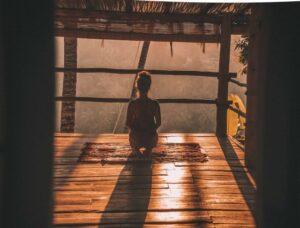Welcome to the land of fire and ice, where breathtaking natural wonders await your exploration. Iceland, with its dramatic landscapes, offers an unparalleled adventure for nature enthusiasts. From cascading waterfalls to towering glaciers, and steaming geothermal springs to rugged volcanic terrain, this North Atlantic island is a haven for outdoor adventurers.

Whether you’re a hiker, glacier trekker, or simply a nature lover, Iceland beckons with its pristine beauty and diverse landscapes. Join us as we embark on a journey to discover the awe-inspiring natural wonders of Iceland, where every step reveals a new and captivating facet of this extraordinary country.
Iceland, a Real Miracle
Iceland, often referred to as the “Land of Ice and Fire,” is a geological wonderland shaped by the powerful forces of nature. This remote island nation sits atop the Mid-Atlantic Ridge, where the Eurasian and North American tectonic plates meet, resulting in a landscape that’s ever-evolving.
Here, you can witness the raw, elemental forces of our planet in action, from volcanic eruptions to glaciers carving their way through mountains.
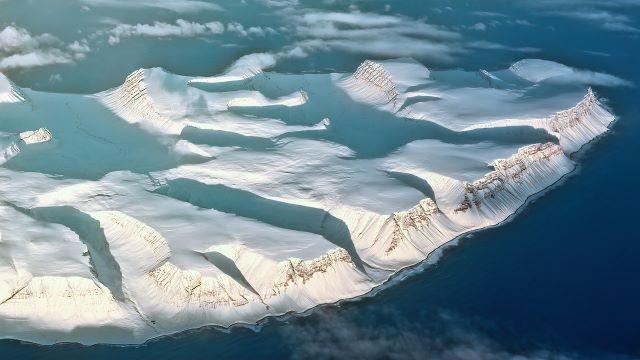
But Iceland isn’t just about its geological marvels. It’s also a place where you can experience the magic of the Northern Lights dancing across the night sky, soak in soothing geothermal hot springs, and explore vibrant cities like Reykjavik, where culture and history thrive.
Whether you’re an intrepid adventurer or a traveler seeking serenity, Iceland offers a wealth of experiences that will leave you in awe of the natural world. Join us as we delve into the wonders of this remarkable island nation.
The Unique Landscape of Iceland
Volcanoes and Geothermal Activity
Iceland’s landscape is a testament to the earth’s relentless geological processes. It’s a land where you can witness the dramatic interplay of volcanoes and geothermal activity. The island is dotted with active volcanoes, some of which have erupted spectacularly in recent history, leaving behind surreal landscapes of lava fields and smoking craters.
This dynamic geology also gives rise to numerous geothermal hotspots, where you can soak in warm, mineral-rich waters amidst a stark, otherworldly terrain. In Iceland, you’ll find an ever-changing canvas of geological wonders that beckon explorers and nature enthusiasts from around the globe.
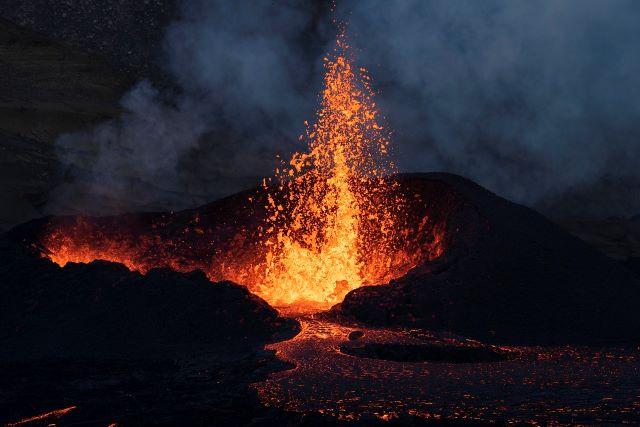
Glaciers and Ice Caves
Iceland’s pristine wilderness is adorned with vast glaciers and mesmerizing ice caves. These colossal ice formations are the result of centuries of snow accumulation and compression. Some of the world’s most impressive glaciers, like Vatnajökull, cover significant portions of the country.
Adventurous souls can embark on glacier treks and ice-climbing expeditions to explore their icy landscapes. What sets Iceland apart is the opportunity to delve into ethereal ice caves, which form during the winter months when meltwater carves intricate tunnels and chambers within the glacier ice. It’s a subterranean world of shimmering blue ice and natural ice sculptures, a sight that’s nothing short of magical.
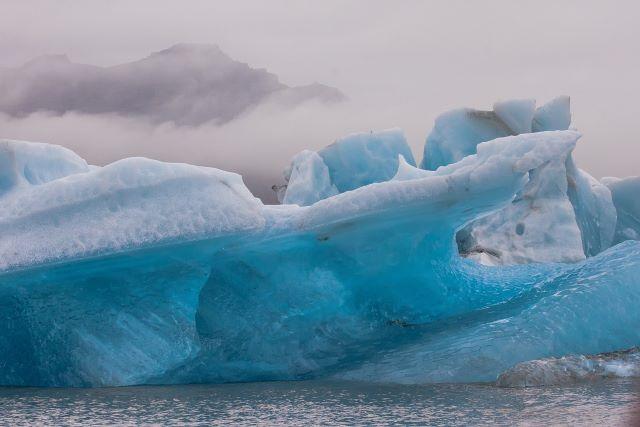
Waterfalls and Hot Springs
Iceland’s dramatic landscapes are punctuated by countless waterfalls, cascading down rugged cliffs and through lush valleys. The country’s famous waterfalls, like Gullfoss and Skogafoss, are awe-inspiring and easily accessible, making them popular stops for tourists and hikers alike.
Additionally, Iceland is a geothermal wonderland, dotted with natural hot springs. The Blue Lagoon is a renowned geothermal spa, offering a relaxing soak in warm, mineral-rich waters amid a surreal volcanic backdrop. But Iceland’s hidden gem is its network of secret hot springs nestled in the wilderness, inviting you to unwind in serene solitude amidst nature’s beauty.
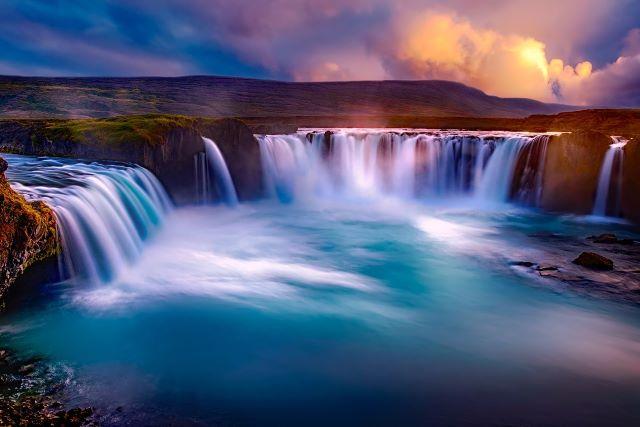
Hiking in Iceland
Popular Hiking Trails
Iceland’s hiking trails cater to a wide range of adventurers, from casual walkers to seasoned trekkers. Some of the most popular hiking routes include the Laugavegur Trail, known for its otherworldly landscapes, and the Fimmvorduhals Pass, which offers stunning views of glaciers and volcanoes.
For those seeking shorter day hikes, paths like the Reykjadalur Hot Springs Trail lead to rewarding natural wonders. The unique geology and ever-changing scenery make hiking in Iceland a truly unforgettable experience.
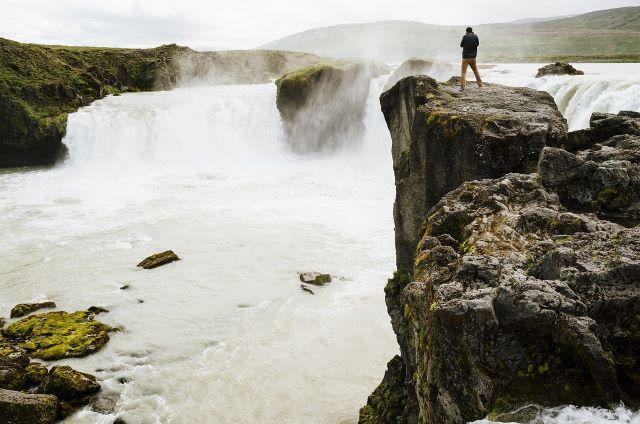
Safety Precautions for Hikers
While Iceland’s natural beauty is captivating, it’s important for hikers to prioritize safety. Weather conditions can change rapidly, so checking the forecast and dressing in layers is crucial. Hikers should also inform someone of their plans and expected return time.
Navigational tools like GPS devices or paper maps are handy, as some trails may lack clear markers. Additionally, respecting local guidelines and the fragile environment is vital to preserving Iceland’s pristine landscapes. With proper preparation and a respect for nature, hiking in Iceland can be a rewarding adventure.
Glacier Trekking Adventures
Exploring Vatnajökull Glacier
Glacier trekking in Iceland is an unforgettable adventure, especially on the vast Vatnajökull Glacier. These excursions require guides with expertise in glacial terrain, and safety gear is a must. Hikers should be prepared for challenging conditions and fluctuating temperatures.

Exploring ice caves within the glacier adds an extra layer of enchantment to the experience. Travelers should choose tours led by reputable companies and adhere to safety instructions to fully enjoy this thrilling glacier trekking adventure in Iceland.
Sólheimajökull Glacier Walk
The Sólheimajökull Glacier walk is another incredible trekking opportunity in Iceland. Located on the southern coast, this glacier provides visitors with an opportunity to witness the stunning icy landscapes up close. As with any glacier trekking adventure, it’s essential to join guided tours led by experienced professionals who prioritize safety.
The Sólheimajökull Glacier walk offers an excellent chance to marvel at the glacier’s unique features and learn about its formation, but it’s crucial to be adequately prepared for the rugged terrain and unpredictable weather conditions.
Whale Watching and Puffin Spotting
Whale watching and puffin spotting are two remarkable wildlife experiences you can enjoy while exploring Iceland. The country’s coastal regions offer fantastic opportunities to witness these incredible creatures in their natural habitats.
Whale Watching: Iceland is renowned for its rich marine life, and whale-watching tours are a popular attraction. The waters surrounding the island are home to various whale species, including humpback whales, minke whales, orcas, and even blue whales. Tour operators offer guided boat excursions that take you out to sea, where you can observe these magnificent mammals. The best time for whale watching in Iceland is during the summer months, from May to September.

Puffin Spotting: Puffins are charming seabirds known for their colorful beaks and distinctive appearance. Iceland boasts numerous puffin colonies, particularly along its coastal cliffs. Birdwatching enthusiasts and nature lovers can embark on guided tours to observe puffins in their natural habitats. Some popular puffin spotting locations include the Westman Islands, Dyrhólaey Peninsula, and Látrabjarg Cliffs. The best time for puffin spotting is from late April to early August when these birds are nesting.
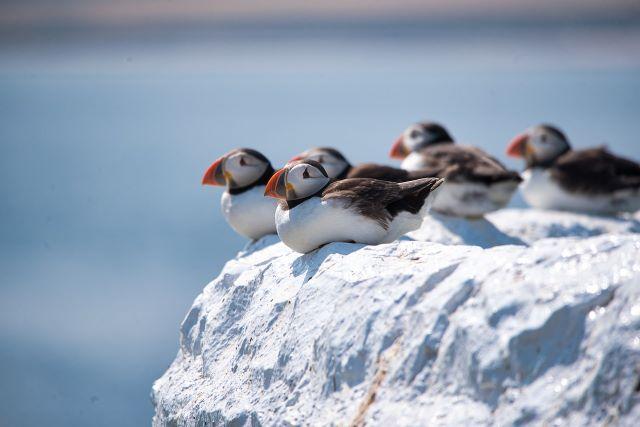
Whether you’re on a boat in search of whales or hiking along the rugged coastline to see puffins, Iceland provides incredible wildlife encounters for nature enthusiasts and photographers alike. However, always remember to respect the animals and their environments by maintaining a safe and responsible distance during your adventures.
Northern Lights and Midnight Sun
Iceland offers two remarkable natural phenomena that captivate visitors year-round—the Northern Lights (Aurora Borealis) and the Midnight Sun.
Northern Lights (Aurora Borealis): Witnessing the Northern Lights is a magical experience that draws countless visitors to Iceland during the winter months. The country’s northern and remote locations provide ideal conditions for viewing this celestial spectacle.
The Northern Lights appear in the night sky from September to April, with peak visibility during the dark winter nights. Many tour operators offer guided Northern Lights tours, taking you to prime viewing spots away from city lights. Be prepared for mesmerizing displays of dancing colors and shapes as the auroras light up the Arctic skies.
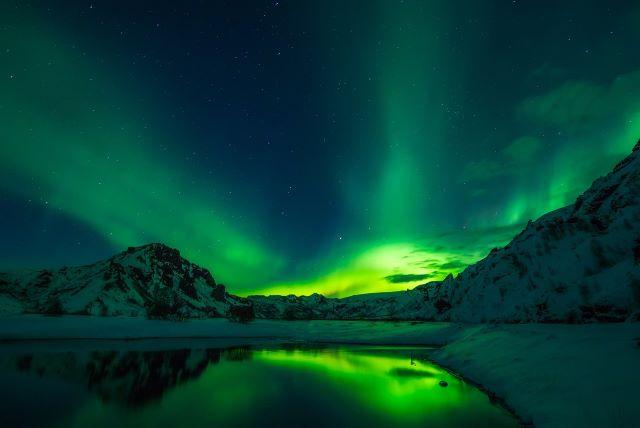
Midnight Sun: In contrast to the darkness of winter, Iceland experiences the phenomenon of the Midnight Sun during the summer months, typically from late May to mid-August. This natural occurrence means that the sun remains visible even at midnight, creating endless daylight hours for exploration.
During this time, you can engage in activities like hiking, sightseeing, and photography at any hour. The extended daylight allows you to make the most of your Icelandic adventure, whether you’re exploring glaciers, waterfalls, or volcanic landscapes.
Both the Northern Lights and the Midnight Sun offer incredible opportunities for photographers and nature enthusiasts. When planning your trip to Iceland, consider the season and phenomenon that resonate most with your interests and embark on a journey to witness these awe-inspiring natural wonders.
Conclusion
Iceland’s natural wonders are a testament to the Earth’s breathtaking beauty and diversity. From fiery volcanoes and ice-covered glaciers to thundering waterfalls and soothing hot springs, this island nation offers an unparalleled playground for nature enthusiasts and adventurers alike.
Whether you’re hiking along dramatic landscapes, trekking across glaciers, or marveling at the Northern Lights and the Midnight Sun, Iceland promises unforgettable experiences at every turn.
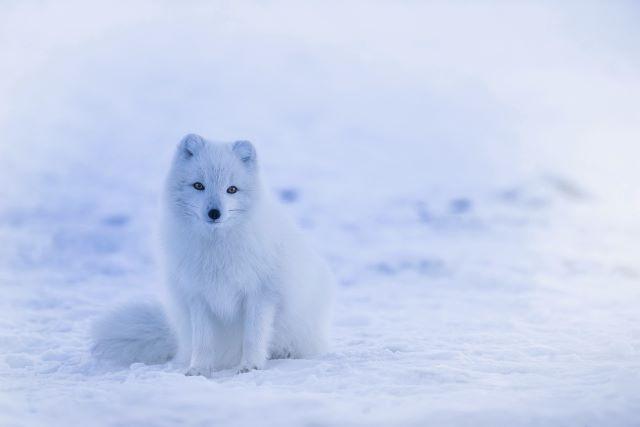
As you plan your visit to this land of geological marvels, remember to prioritize safety, respect the environment, and immerse yourself in the unique culture of Iceland. Whether you’re an outdoor enthusiast seeking thrilling adventures or a traveler yearning for tranquility amidst untouched landscapes, Iceland’s natural wonders await your exploration.
So, when the time comes to embark on your Icelandic journey, be prepared to be awestruck by the raw power and beauty of nature. Whether it’s your first visit or a return trip, Iceland’s captivating landscapes and natural phenomena will leave an indelible mark on your heart and soul. Embrace the magic of Iceland and the wonder of its natural world.
FAQs:
Is Iceland safe for hiking and outdoor activities?
Iceland is generally safe for hiking and outdoor activities, but it’s essential to be well-prepared and informed. Weather conditions can be unpredictable, so checking forecasts and informing others of your plans is crucial. Always follow safety guidelines, use appropriate gear, and consider guided tours, especially for more challenging activities like glacier trekking.
When is the best time to visit Iceland for hiking?
The best time for hiking in Iceland depends on your preferences. Summer (June to August) offers milder weather, long daylight hours, and green landscapes. However, it’s also the peak tourist season. Spring and autumn provide fewer crowds, but the weather can be more unpredictable. Winter (December to February) offers unique experiences like the Northern Lights but can be extremely cold.
Are guided tours necessary for glacier trekking?
While experienced hikers might venture onto glaciers independently, guided tours are highly recommended for glacier trekking in Iceland. Glacial terrain can be hazardous, with hidden crevasses and unpredictable ice conditions. Guides are trained to assess safety and provide equipment, enhancing the experience while ensuring your safety.
Can I see the Northern Lights in Iceland year-round?
The Northern Lights, also known as the Aurora Borealis, are visible in Iceland from late September to early April when the nights are dark. The peak season is from October to March. However, sightings depend on various factors, including solar activity and weather conditions. It’s best to visit during the prime months for a higher chance of witnessing this natural phenomenon.
How do I get to Iceland?
Iceland is well-connected by air, with the Keflavik International Airport near Reykjavik being the main gateway. Numerous airlines offer flights to Iceland from major European and North American cities. Once you arrive, you can explore the country’s natural wonders by renting a car, joining guided tours, or using public transportation.




